…for Campers and Survivalists
Picture this: You’re deep in the wilderness, soaked to the bone, and the temperature’s dropping fast. You need a fire, but everything’s wetter than a duck’s backside. Sound familiar?
I’ve been there, folks. On a training exercise in the Brecon Beacons in Wales, I found myself huddled under a makeshift shelter, teeth chattering, desperately trying to light damp matches. It was a disaster. As a result, I learned some lessons about wet weather fire starting!
But here’s the thing – starting a fire in wet conditions isn’t impossible. With the right know-how, it’s doable! That’s why I’m excited to share the tips and tricks I’ve learned for mastering wet weather fire-starting.
In this guide, we’ll explore everything from the challenges you’ll face to essential gear and other fire-starting methods. Whether you’re a seasoned wilderness guru or a camping newbie, these skills could literally save your life.
Ready to become a wet weather fire starting pro? Let’s get fired up!
Understanding the Challenges of Wet Weather Fire Starting
Let me tell you, starting a fire in wet conditions is no walk in the park. I learned this the hard way on a local camping trip in Rutland. It had been raining all day, and everything – and I mean everything – was soaked.
The biggest challenge? Moisture is the arch-nemesis of fire. It seeps into your tinder and kindling (small bits of dry wood), making it nearly impossible to light a fire. And even if you do get a spark going, wet wood just doesn’t want to burn hot. It’s like trying to light a soggy newspaper – frustrating and mostly futile.
One of the most common mistakes I see campers make (and trust me, I’ve made it myself) isn’t properly preparing for wet weather. They assume their regular fire-starting methods will work just fine. Spoiler alert: they won’t.
That’s why preparation is key. Having the right tools and knowing how to use them can make all the difference between a cosy campfire and a cold, miserable night.
Essential Gear for Wet Weather Fire Starting
Now, let’s talk gear. When it comes to wet weather fire starting, your regular matches just aren’t going to cut it. Trust me, I’ve stood in the rain, striking match after match, only to end up with a pile of wet, useless sticks.
That’s why I always pack waterproof fire starters. These bad boys are a game-changer. Weather-resistant matches are great, but I’m a big fan of storm-proof lighters too. They’re reliable and can withstand some serious weather.
But here’s a pro tip: proper storage is crucial. I learned this lesson when I found my “waterproof” match container had a tiny crack, rendering all my matches useless.
Now, I use a watertight container for all my fire-starting materials. It might seem like overkill, but when you’re cold and wet, you’ll thank yourself for being over-prepared.
Gathering and Preparing Tinder in Wet Conditions
Finding dry tinder in a wet environment can feel like searching for a needle in a haystack. But it’s not impossible! The key is knowing where to look.
One of my favourite natural, water-resistant tinder sources is birch bark. This stuff is amazing – it contains oils that make it naturally water-resistant and highly flammable. Another great option is pine needles. They’re often dry under the surface layer.
If natural tinder is scarce, don’t worry! This is where preparation comes in handy.
I always carry some homemade char cloth in my pack. It’s easy to make and catches a spark like nobody’s business. Just take some old cotton fabric, put it in a metal container with a small hole, and heat it over a fire until it turns black. Voila! You’ve got yourself some prime tinder.
Alternatively, you can buy ready-made kits, like this one.
Alternative Fire-Starting Methods for Wet Weather
Sometimes, traditional methods just won’t cut it in wet conditions. That’s when you need to get creative. One of my go-to methods is using a ferro rod and striker. These create super-hot sparks that can ignite even damp tinder.
Another trick I swear by is the cotton ball and petroleum jelly combo. Just coat some cotton balls in petroleum jelly and store them in a waterproof container. These burn hot and long, giving you plenty of time to build your fire.
And let’s not forget about fatwood (which is the heartwood of pine) or pitch wood. This resin-rich wood is naturally water-resistant and burns hot. I once started a fire in the pouring rain using just a piece of fatwood and a ferro rod. It felt like magic!
Building a Fire Lay for Wet Conditions
Alright, you’ve got your fire starter, but now what? Building a proper fire lay is crucial, especially in wet conditions. First things first: site selection. Look for natural shelters like overhanging rocks or dense tree cover. These can provide some protection from the rain.
Next, create a protective base for your fire. I like to use a platform of dry logs or stones to elevate the fire off the wet ground. This helps keep your fire pit dry and allows for better airflow.
When it comes to the actual fire lay, I swear by the “log cabin” method for wet weather.
Start with your tinder in the centre, surrounded by a teepee of small kindling. Then, build a square of progressively larger sticks and logs around it. This structure helps protect the flame from wind and rain while allowing it to build heat.
Maintaining and Nurturing Your Fire in Wet Weather
Getting your fire started is only half the battle. Keeping it going in wet conditions? That’s where the real challenge begins. The key is to start small and build gradually.
Begin with your tinder and smallest kindling. Once that’s burning well, slowly add larger pieces of wood. Don’t rush this process! Adding large, wet logs too soon can smother your fledgling fire.
One trick I’ve learned is to place damp wood around the edges of your fire pit. The heat from the fire will help dry it out, making it easier to burn later. And don’t forget about wood shavings! They catch fire easily and can help ignite larger pieces of wood.
Remember, in wet conditions, your fire needs constant attention. Keep feeding it dry materials and protect it from the rain as much as possible. With a little patience and care, you’ll have a roaring fire in no time!
Final Thoughts on Mastering Wet Weather Fire Starting
Starting a fire in wet weather may seem hard, but with the right tools and practice, you can light a fire even in the rainiest conditions.
Remember, preparation is key – always pack waterproof fire starters and keep your gear dry. When faced with wet weather, think creatively and use different methods like the petroleum jelly-coated cotton balls or a trusty ferro rod. Don’t forget to build a proper fire lay and nurture your flame patiently.
As you head out on your next camping adventure, take some time to practice these skills in a controlled environment. The more comfortable you become with wet weather fire starting, the more confident you’ll be in any outdoor situation. Stay safe out there, and remember – a warm fire can make all the difference in the wilderness!
What’s your go-to method for starting fires in wet conditions? Share your tips in the comments below!

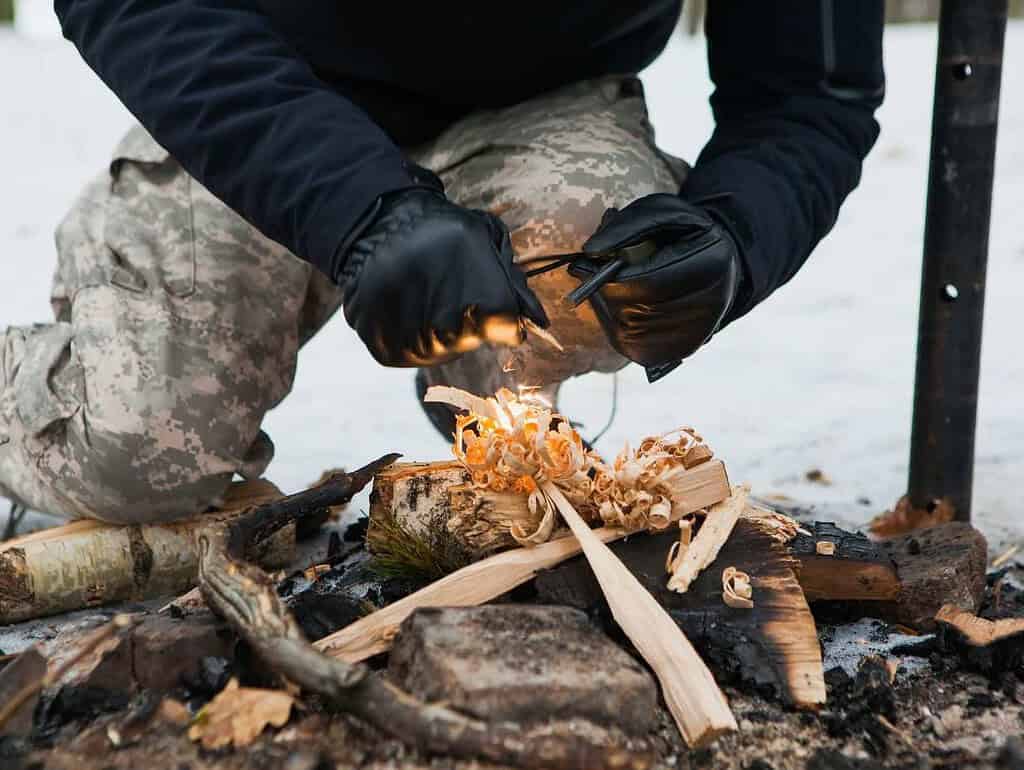
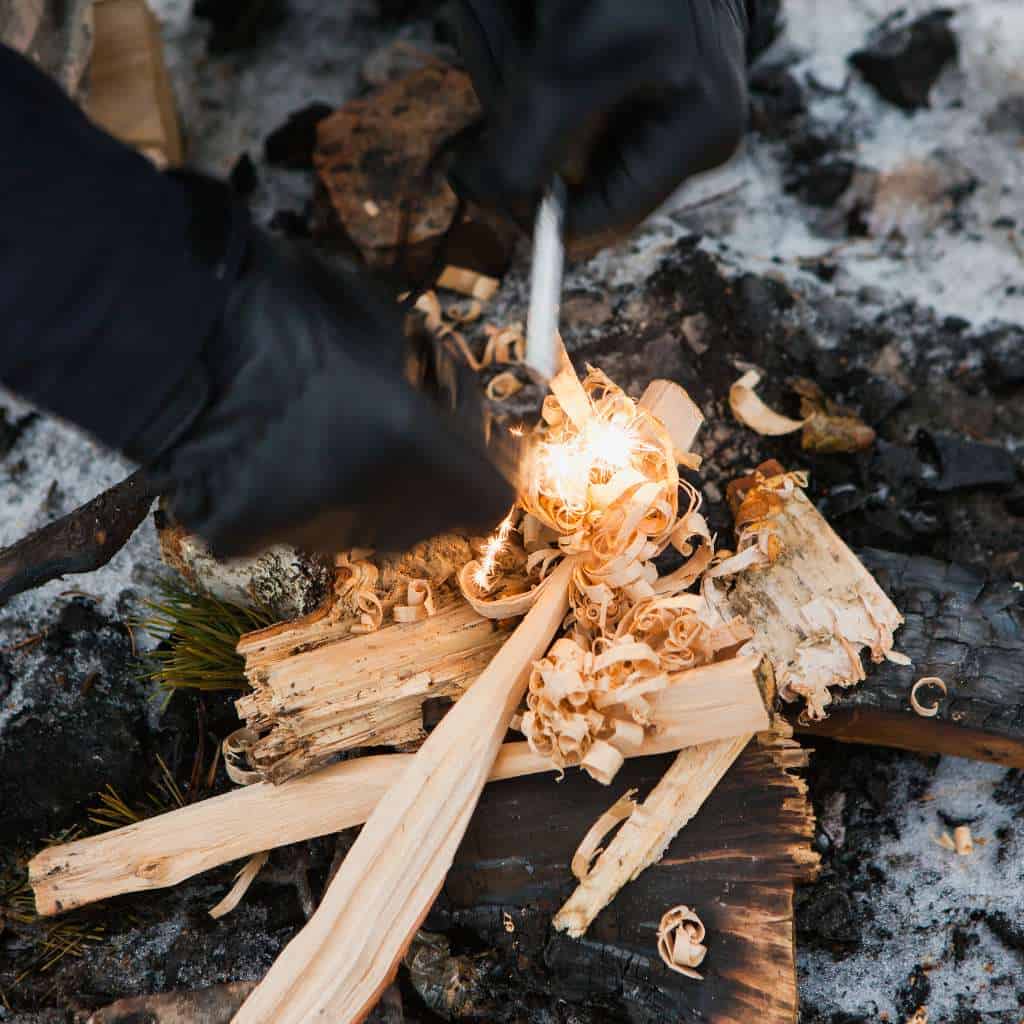
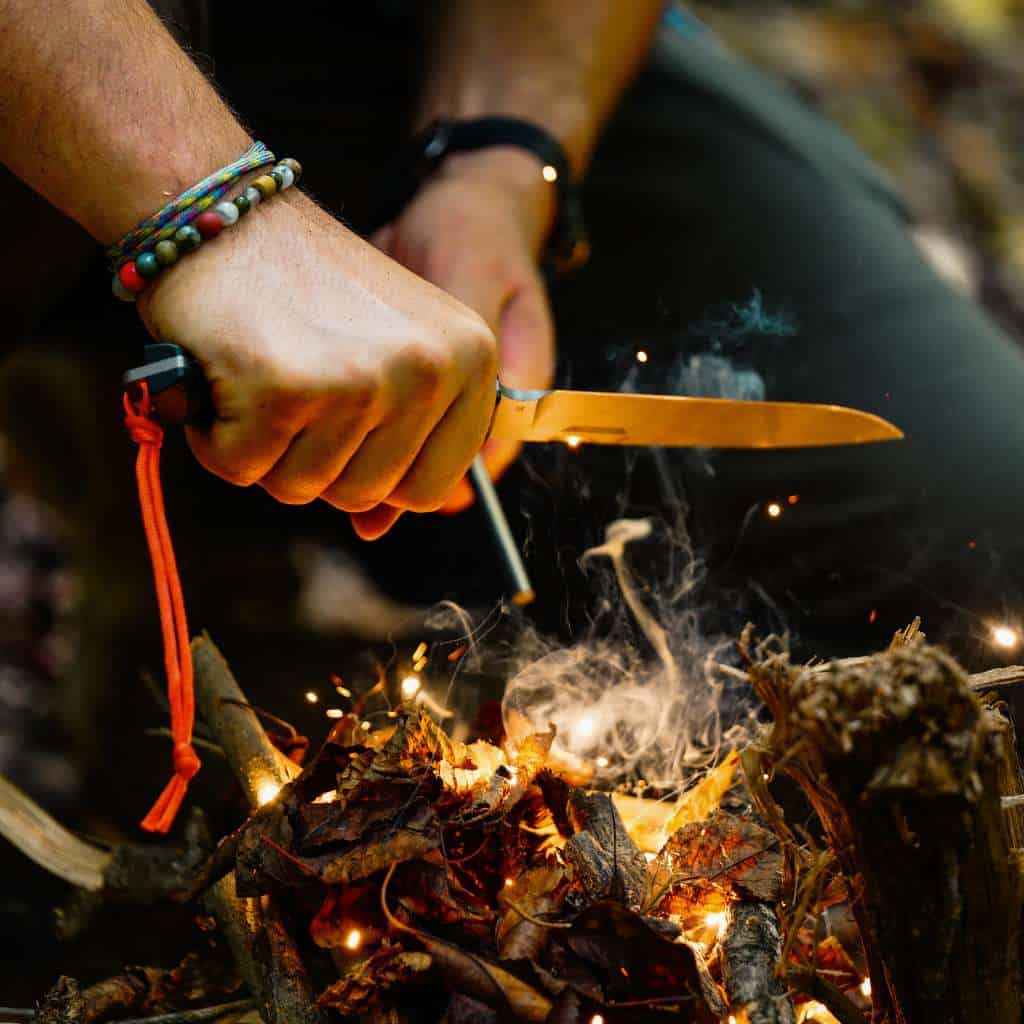
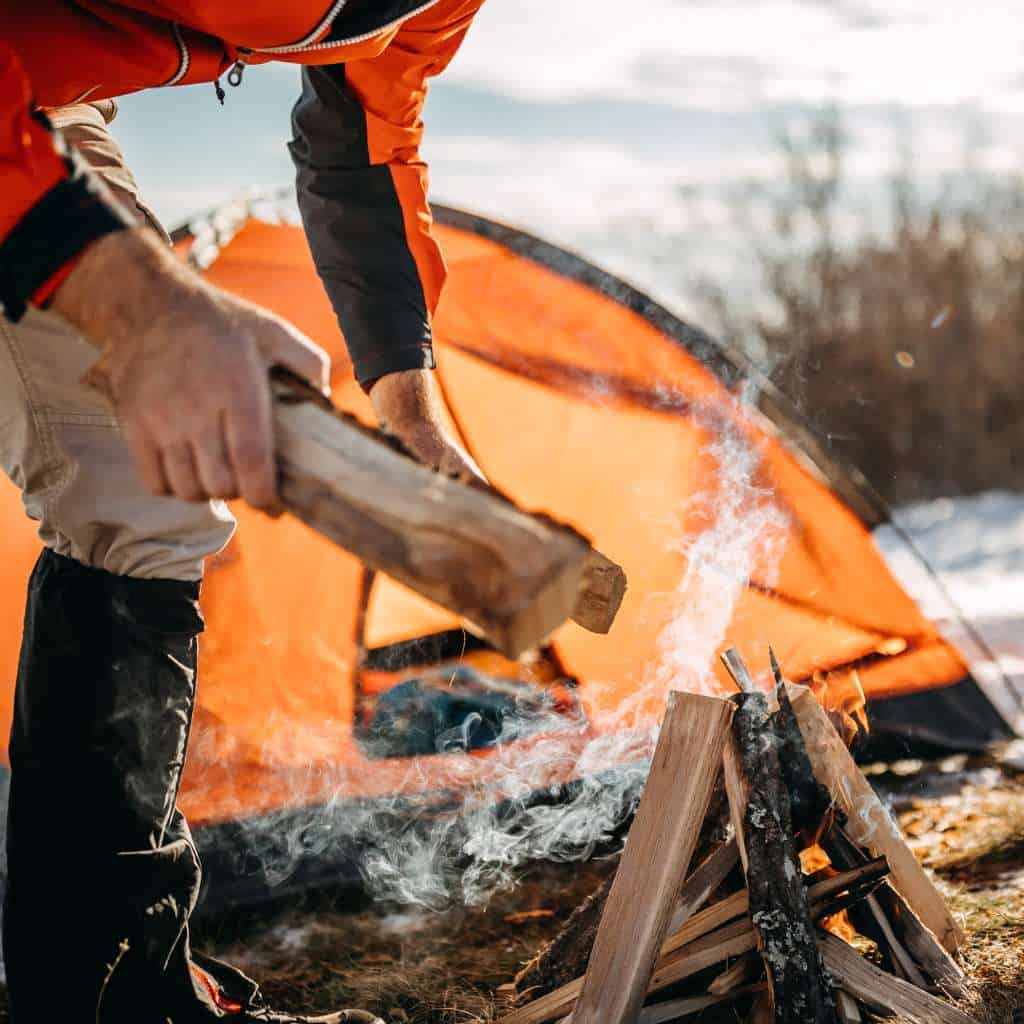
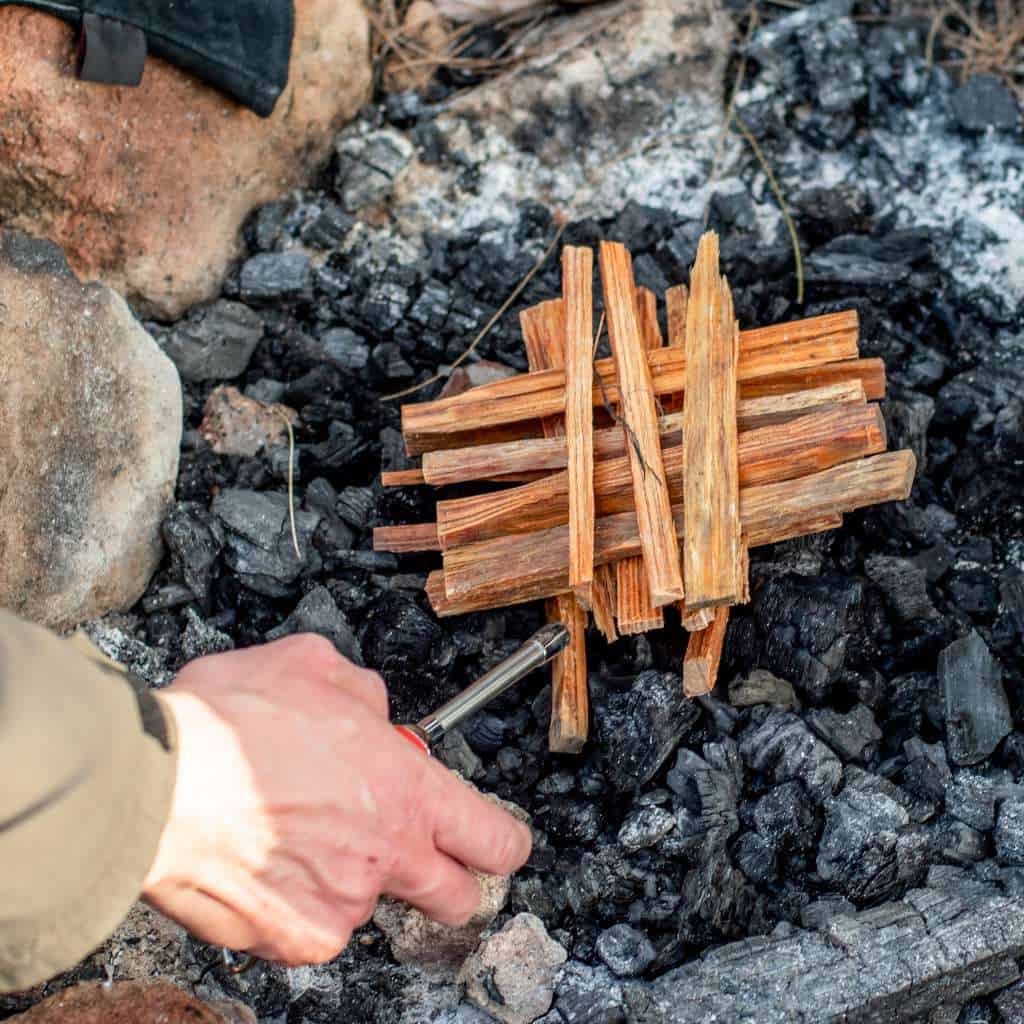
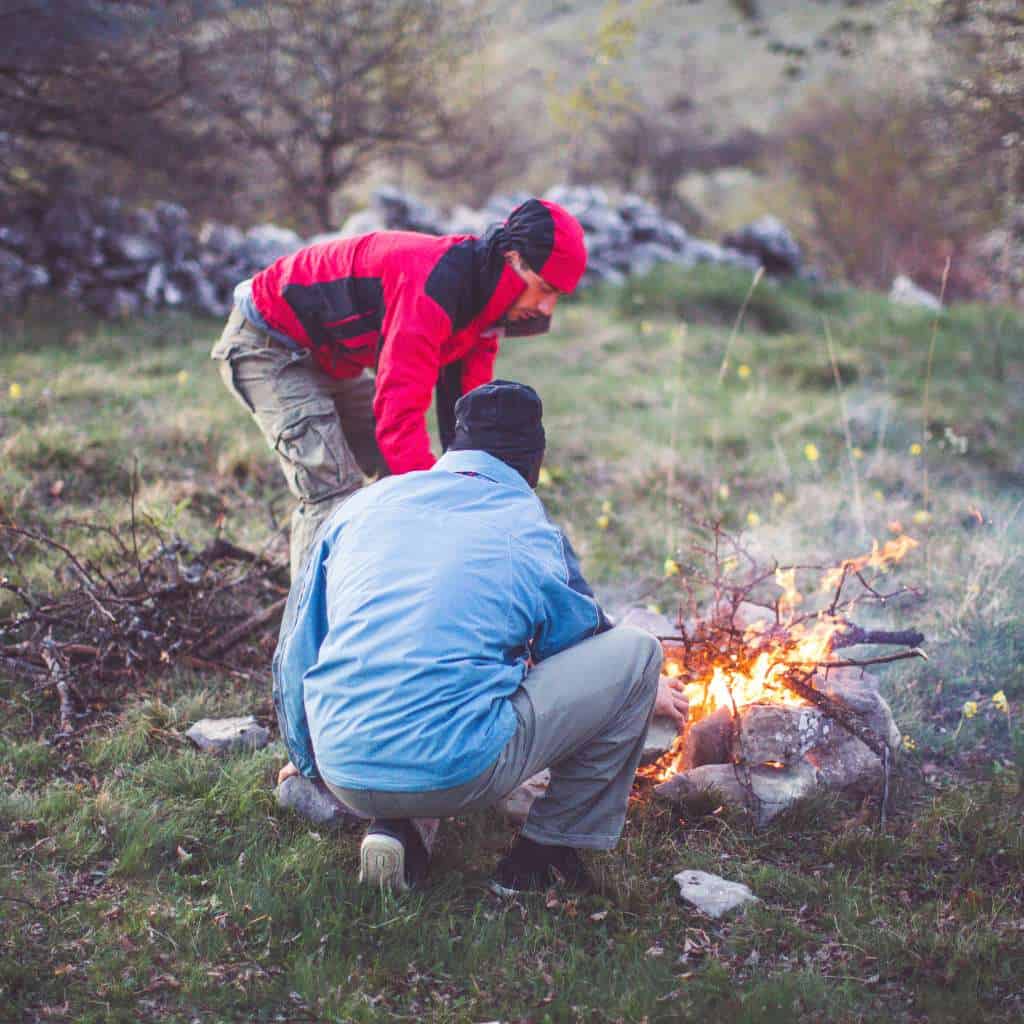
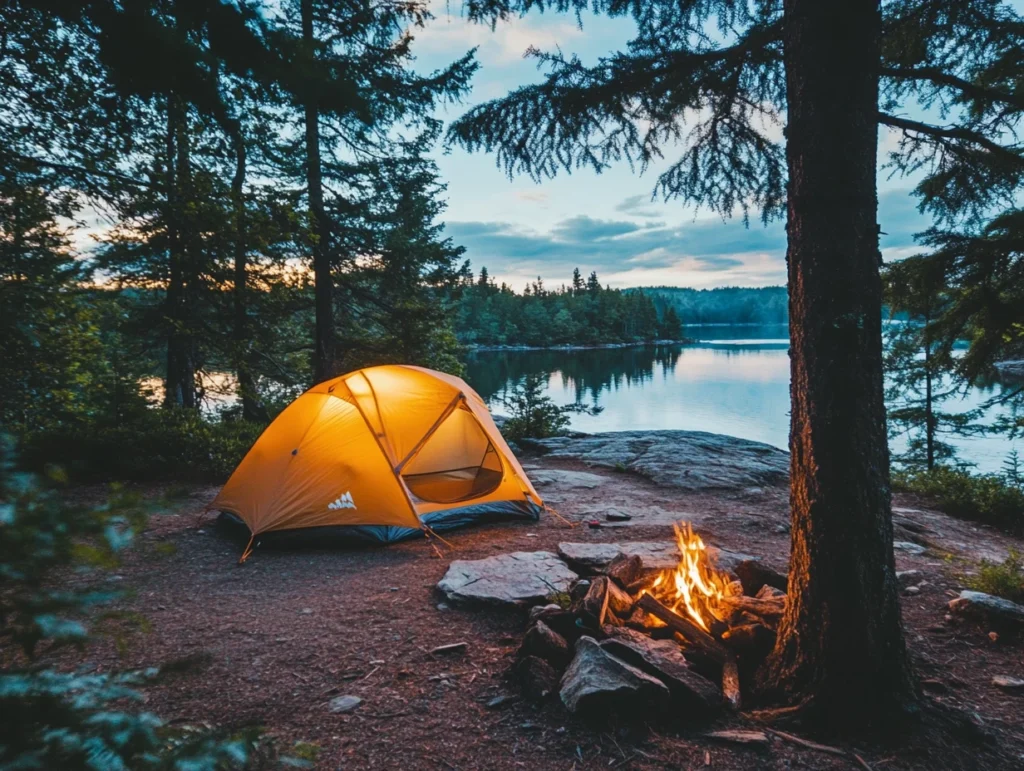
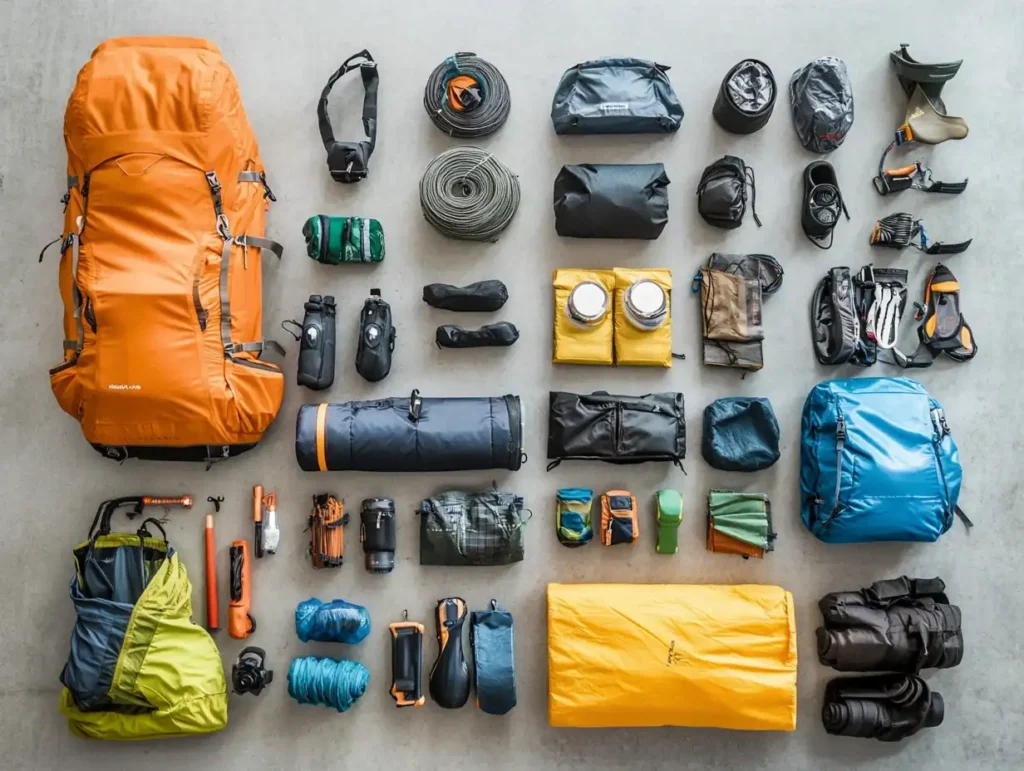
Pingback: Essential Camping Knots Guide: Mastering the Art | WBH